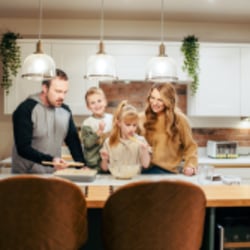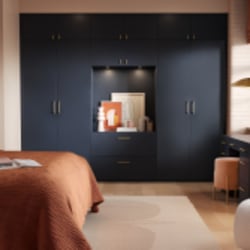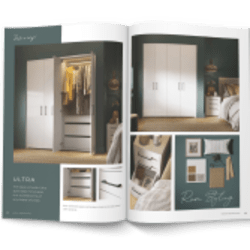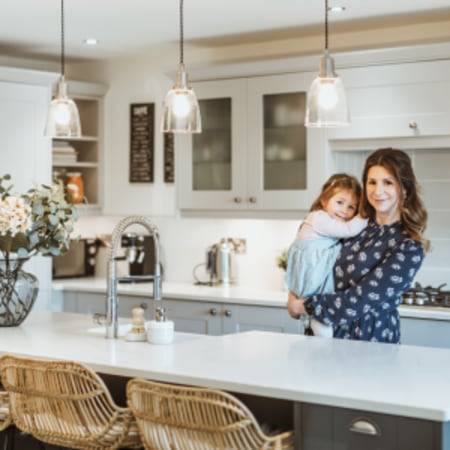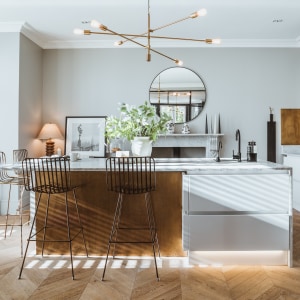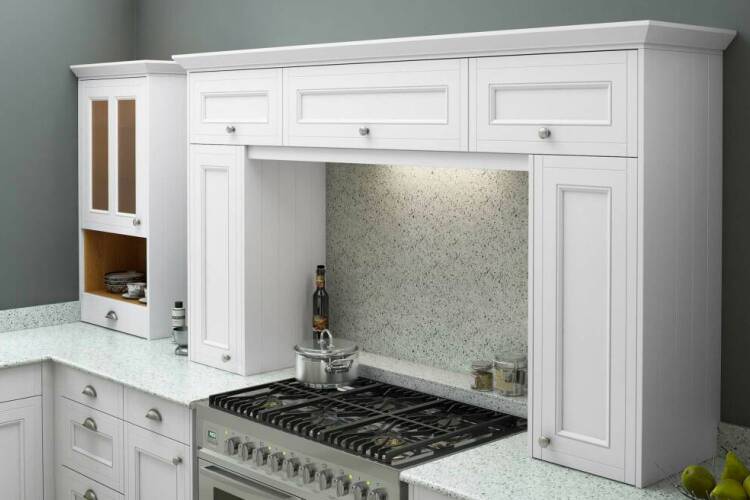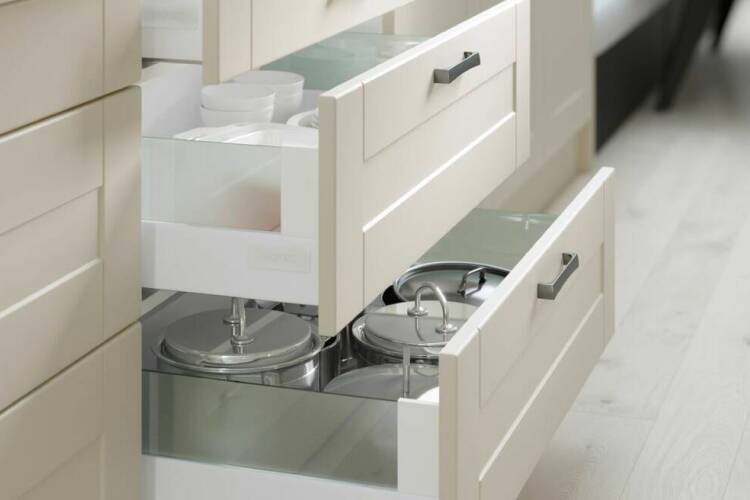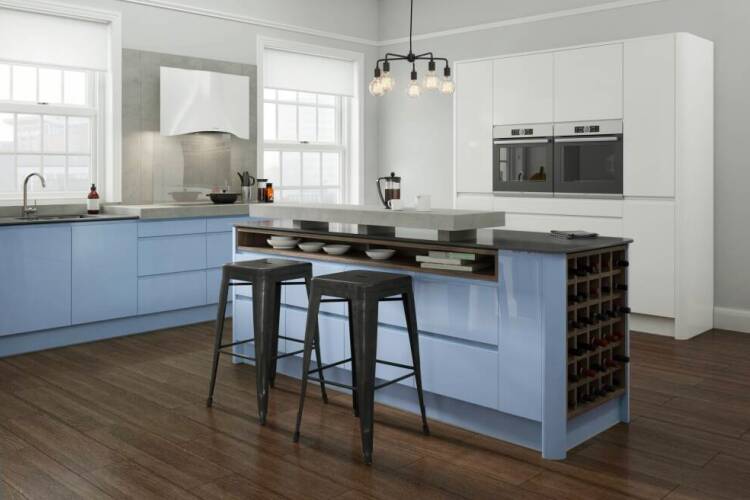How to make your kitchen pet friendly
Accessories ideas
Pets become a part of our lives and families as soon as they come home for the first time. Whether you have a curious kitty or a playful puppy, following these easy steps will help keep your kitchen clean and your furry friend protected from daily hazards.

Special pet areas
There are ways your little (or large) companion can spend time with you in the kitchen as you move through your daily routine.
Integrated food and water bowls can be installed on the side of a kitchen island or unit, so your pet can share mealtimes with you! Large spaces beneath worktops can be used as your pet's bedroom if you add a bed – just make sure it's not beneath a food prep area where they could accidentally trip you.
Give you pet their own cupboard or unit, and create a dedicated space to store their food, medications, waste bags, treats and grooming equipment. This will keep everything together for easy access, and you'll never be left searching for an errant brush or medicine!

Food
Food is the number one hazard in any kitchen. Common household ingredients that you normally wouldn't think twice about can be toxic to your cat or dog. Unfortunately, dogs in particular seem to be attracted to food that'll do them harm, so it's important that you store these substances away at all times.
Dogs can be tempted by chocolate, coffee, grapes, and raisins. Store what you can in sealed containers, tucked away in cupboards. If you're leaving food on the side, keep it at as high and level as possible – it'll be out of reach and unlikely to fall to somewhere they can tuck into it.
Cats are less likely to indulge in your groceries, but their habit of jumping on worktops can be detrimental to your own food hygiene standards. Reduce the risk of paws and fur in your food by keeping it covered when on the side – a simple Tupperware box should do the trick!
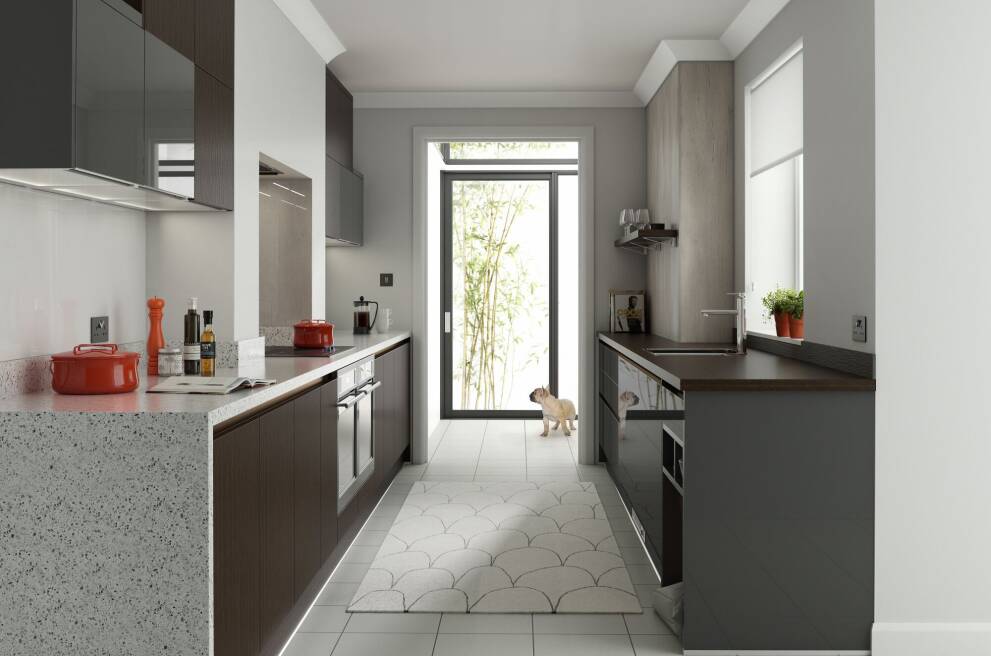
Cleaning products and waste disposal
Keeping your kitchen clean is important for everyone in the home, but those sprays and creams are highly toxic to humans and pets when swallowed. Most cleaning products will have a child-proof lid, but a determined dog could chew through the plastic.
Assign a cupboard for cleaning storage, and ensure you always put away cleaning products as soon as you've finished using them. Child-proofing latches will stop even clever dogs from being able to open the door of the cupboard. During cleaning, especially when using bleach, try to keep your cat out of the room to avoid the risk of them getting something nasty on their delicate paw pads.
Pets can be tempted by the smell of food, leading to them rummaging in places where there are sharp objects and toxic materials. Even if you think your bin is impossible to access, you could consider storing it in a cupboard that has a child-proof latch.
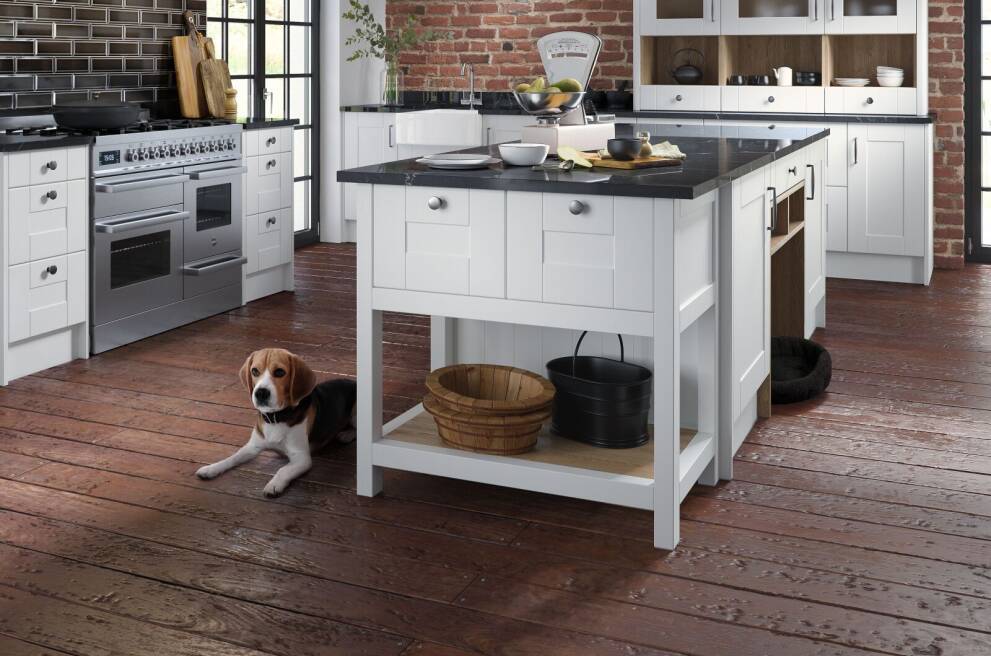
Cooking appliances
The appliances that help you to make magic in the kitchen can be very hazardous to pets. The hob is dangerous for cats, as they can easily jump onto a hot hob. An induction hob is a better choice for those who own cats, as it will only heat up when covered with a pan and cools more quickly than a gas hob.
Kitchen knives and other cutlery can also be an issue for cats and dogs. Child-proofing latches can also be applied to drawers, while kitchen knives should be stored in a proper block that's safe from being tipped over by a tail or paw – consider implementing an integrated knife block into your kitchen drawer.

How to clean your kitchen when you have pets
Muddy paws, shedding fur, drool – just a few things we agree to deal with when we bring a pet home. However, it's easy to keep the kitchen clean and tidy, even when a furry guest believes the walls look so much better with muddy splashes.
Prevention is always best, so choose sealed laminate flooring if you know your dog or cat will spend time in there. Laminate floors are easy to clean with a brush and damp microfibre mop, so you can tackle mud and water as soon as they appear.
Some paints are especially water resistant, so you can wipe away mud with a damp cloth without ruining the paintwork. Tiles are also a great choice on any wall of your kitchen that could become splashed, as they're easy to clean and buffer.
Make sure you sweep up every day to collect dirt and fur. First time pet owners would be surprised just how much a pet can shed, even if they have a low-shed coat, so this simple five-minute task will help to avoid a much larger job in the future.

